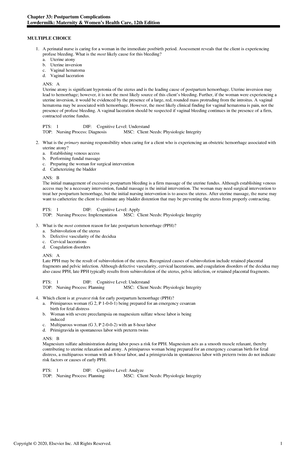- Information
- AI Chat
Was this document helpful?
Blood administration - this item depicts the skills you need to know as a nurse
Course: Nursing (0001)
228 Documents
Students shared 228 documents in this course
University: Cambridge College
Was this document helpful?

ACTIVE LEARNING TEMPLATES
Nursing Skill
STUDENT NAME _____________________________________
SKILL NAME ____________________________________________________________________________ REVIEW MODULE CHAPTER ___________
ACTIVE LEARNING TEMPLATE:
Description of Skill
Indications
Outcomes/Evaluation
CONSIDERATIONS
Nursing Interventions (pre, intra, post)
Potential Complications
Client Education
Nursing Interventions
BLOOD ADMINISTRATION
A blood transfusion is a routine medical procedure in which donated blood is provided to you
through a narrow tube placed within a vein in your arm
Warm blood at room temperature before
transfusion to prevent chills.
Do not mix meds and blood to prevent
adverse reactions.
Observe for potential complications, notify
physician if any arise
Pain, anxiety, hematuria, fever, headache,
ananphylaxis
Client should inform health care professional if they
have had reactions in response to previous blood
transfusions, if they are taking dietary supplements
containing iron. Patient will be asked to sign papers to
consent to transfusion therapy. Educate client and the
procedure before doing anything. Educate the client
on why they are receiving blood
Maintains normal breathing pattern
Demonstrates adequate cardiac output
Reports minimal or no discomfort Maintains
good fluid balance Remains normothermic
Remains free of infection Maintains good
skin integrity, no lesion or pruritis Maintains
or returns to normal electrolyte and blood
chemistry values
Blood should be administered within 30 minutes of
leaving the blood bank
Two licensed personnel must verify proper blood
product-Vitals noted before infusion and closely
monitored during infusion
monitor patient for at least 15 min one initiating
administration
Blood products must be infused within 4 hours from
leaving the blood bank
Improve or restore oxygen carrying capacity
and tissue oxygenation
Restore blood volume lost d/t trauma,
haemorrhage, surgery, and burns
Correct red blood cell deficiency
Maintain or improve blood's clotting ability












